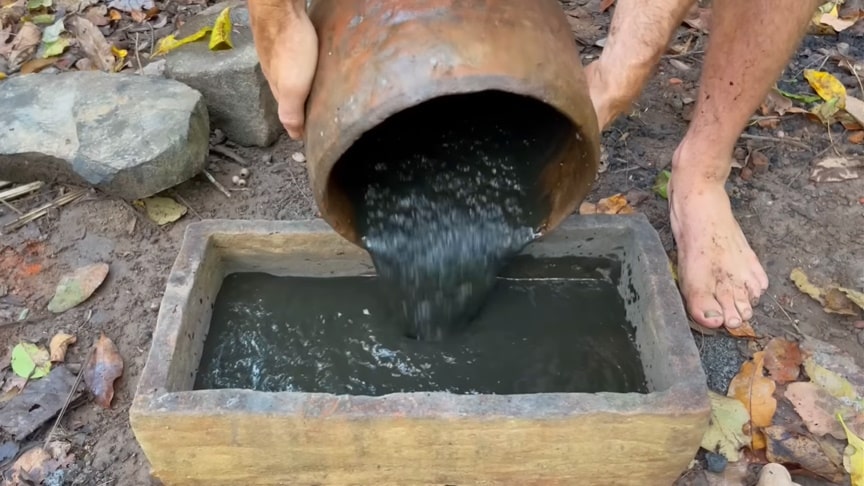I developed a cement made from iron bacteria, then made pots from it to test its ability to set and not dissolve in water. Iron bacteria lives by oxidizing dissolved iron 2 oxide in the water table, converting it to insoluble iron 3 oxide, which precipitates out of solution forming an orange slime. This material can be concentrated to a paste that can be shaped into objects. After drying out completely, the material becomes insoluble in water just as cement does.
source/image: Primitive Technology
I don’t know for sure why it does this but I suspect that while it’s wet, there’s still some dissolved iron 2 oxide in the material. When air gets to the iron 2 oxide and converts it to iron 3 oxide it precipitates out. It then becomes a solid, cementing itself to the other iron 3 already present.
This is probably why iron bacteria sometimes forms solid lumps known as bog ore. Bog ore was once primarily used for smelting into iron but was also occasionally used as a building material (not as a cement but as solid building blocks).The potential use for this material could be as a cement-like material or mortar used in structures when iron bacteria can be found in large quantities.
Advertisement
Fire is not used in the process as is the case with limestone or wood ash cement, and so reduces fuel consumption. It may be an appropriate use for iron bacteria contaminated with mud that might otherwise be unsuitable for smelting. Aggregates such as sand and gravel could also be added to bulk out the volume. More experiments need to be made./Primitive Technology











